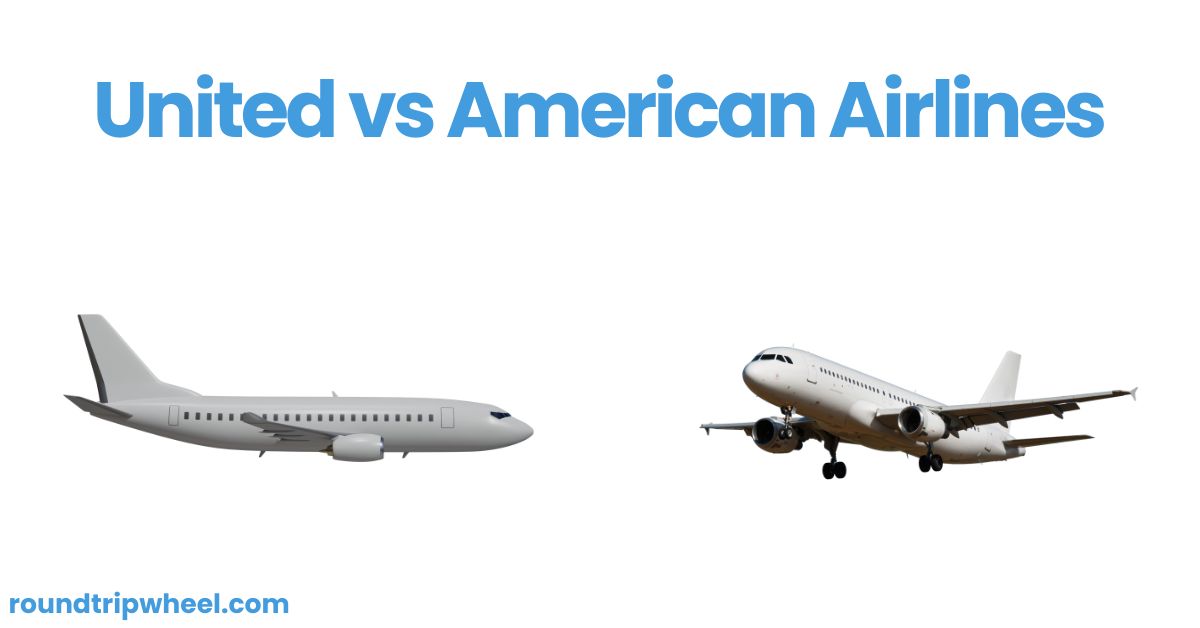United vs American Airlines: Which Is Better for Your Travel Needs?

When it comes to choosing between two of the major legacy carriers in the United States, United Airlines and American Airlines, there are several key factors to consider. Both airlines offer extensive route networks spanning domestic and international destinations, but they differ in areas like reliability, fees, loyalty programs, and in-flight experience. In this comprehensive article, we’ll dive deep into the pros and cons of each airline to help you determine which one aligns better with your travel preferences and needs.
Routes and Destinations
Both United and American Airlines boast impressive route networks, but there are some nuances to consider.
United Airlines:
– Flies to around 211 domestic destinations and 138 international destinations across 71 countries.
– Part of the Star Alliance, which provides connectivity to over 1,200 airports worldwide through partner airlines.
– Strongest international presence, particularly to Asia and Europe, thanks to its Star Alliance partnerships.
American Airlines:
– Serves around 350 destinations across more than 60 countries, with a focus on the Americas, Europe, and the Caribbean.
– Part of the Oneworld alliance, which includes notable partners like British Airways, Cathay Pacific, and Qantas.
– Offers more domestic flight options within the United States than United, especially when combined with its partnership with Alaska Airlines.
While United has a slight edge in terms of overall international reach, American’s domestic network and partnerships make it a more convenient choice for frequent flyers within the country.
Reliability
When it comes to operational reliability, both airlines have had their fair share of challenges.
According to NerdWallet’s analysis from January to August 2023, United had an on-time rate of 75.51% and a cancellation rate of 2.28%, while American performed slightly better with a 76.44% on-time rate and a 1.52% cancellation rate. However, American had the highest rate of mishandled baggage at 0.85%.
Fees
Airline fees can add up quickly, so it’s crucial to understand what you’ll be paying for various services. In this aspect, American Airlines comes out on top, offering lower fees for seat selection and change fees compared to United.
American Airlines:
– Checked bag fee: $35 for the first bag, $40 for the second (if prepaid).
– Seat selection fee: Average of $23 to select a seat near the front of the cabin for basic economy fares.
– Change fee: Generally eliminated for all fare types, except for some basic economy restrictions.
United Airlines:
– Checked bag fee: Starts at $35 for the first bag if prepaid, $40 within 24 hours of departure.
– Seat selection fee: Average of $30 to select a seat near the front of the cabin.
– Change fee: No fee for changes or cancellations within the U.S., Mexico, and the Caribbean, but restrictions apply to basic economy fares.
Basic Economy
When it comes to basic economy fares, which are the most restrictive and often lack amenities like seat selection and carry-on baggage allowance, American Airlines takes the lead with the most consumer-friendly policies.
United Basic Economy:
– No full-size carry-on bag allowed (only a personal item).
– No seat selection, even after check-in.
– No changes or upgrades allowed.
– Earn MileagePlus miles, but the cheapest to upgrade from basic economy (average of $49 per round-trip).
American Basic Economy:
– Full-size carry-on bag allowed.
– Seat selection allowed for a fee.
– Same-day confirmed and standby options available.
– Earn AAdvantage miles (at a reduced rate).
– Elite members eligible for upgrades and priority boarding.
American Airlines clearly offers the most flexibility and benefits for basic economy travelers, making it a better choice for those looking to save money without sacrificing too many amenities.
Loyalty Programs
When it comes to loyalty programs, American Airlines takes the lead, offering the most valuable elite status program and a higher return on travel spending compared to United.
American AAdvantage:
– Top-tier AAdvantage Executive Platinum status is worth a whopping $28,894 per year, according to NerdWallet’s analysis.
– Travelers can expect a 7.10% return on spending through the AAdvantage program.
– Offers a diverse range of co-branded credit cards through Citi and Barclays.
United MileagePlus:
– Top-tier Premier 1K status is the least valuable of the two airlines but requires the least spending to achieve.
– General MileagePlus members can expect a 4.89% return on spending, one of the lowest in the industry.
– Offers six Chase-issued credit cards, including the United Club℠ Infinite Card with a $525 annual fee.
While United’s credit card options are extensive, American Airlines takes the lead with the most valuable elite status program and a higher rewards rate overall.
Business Class
When it comes to premium cabin travel, both United and American Airlines offer solid lie-flat business class products, but American Airlines takes the edge for consistency across its international and premium domestic routes.
United Polaris:
– United’s Polaris business class has been installed on almost all aircraft, providing a consistent experience.
– However, some routes may still feature eight-wide seating in business class.
American Flagship Business:
– American has retired its older aircraft with sub-par business class products, leaving only its modern, all-aisle-access business class seats.
– A new business class product is set to debut on its Boeing 787-9 and Airbus A321XLR aircraft in 2024.
While both airlines offer impressive business class experiences, American Airlines’ consistency and upcoming product refresh give it a slight advantage for premium cabin travelers.
The Verdict
Based on the analysis of routes, reliability, fees, basic economy policies, loyalty programs, and business class offerings, American Airlines emerges as the overall winner when compared to United Airlines.
American’s extensive domestic network, lower fees, flexible basic economy options, valuable loyalty program, and consistent business class product make it a compelling choice for frequent flyers, especially those who travel primarily within the United States.
However, United’s stronger international presence and partnerships through the Star Alliance may be more appealing for globe-trotters seeking a wider range of international destinations and connections.
Ultimately, the decision between United and American Airlines will depend on your specific travel needs, preferences, and the destinations you frequent the most. If domestic travel is your priority, American Airlines is likely the better choice, while United may be more suitable for those who prioritize international travel and a vast global network.
It’s also worth considering the airline’s hub locations and your proximity to them, as this can significantly impact the convenience and availability of flight options.
Regardless of your choice, it’s always advisable to compare flight times, prices, and amenities for each specific trip, as the best option may vary depending on your travel plans.

About Author
Hey there, fellow explorers! I’m Mark Rodriguez, a big fan of adventures and always hungry for more. Packed with stories and a trusty camera, I’m on a mission to explore cool places around the world.
I love diving into new cultures and landscapes. As a travel writer, my goal is to get you excited about stepping out of your comfort zone, trying new things, and discovering the awesome magic our world has.
Check out my blog for cool stories, travel ideas, and helpful tips to plan your own amazing getaway!





